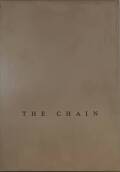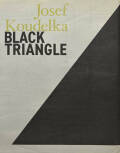David Wilson - Minor Collisions, L'Artiere Edizioni, 2015, Bentivoglio

David Wilson - Minor Collisions (Front)

David Wilson - Minor Collisions (Spine)

David Wilson - Minor Collisions (Back)

Sample page 1 for book " David Wilson – Minor Collisions", josefchladek.com

Sample page 2 for book " David Wilson – Minor Collisions", josefchladek.com

Sample page 3 for book " David Wilson – Minor Collisions", josefchladek.com

Sample page 4 for book " David Wilson – Minor Collisions", josefchladek.com

Sample page 5 for book " David Wilson – Minor Collisions", josefchladek.com

Sample page 6 for book " David Wilson – Minor Collisions", josefchladek.com

Sample page 7 for book " David Wilson – Minor Collisions", josefchladek.com

Sample page 8 for book " David Wilson – Minor Collisions", josefchladek.com

Sample page 9 for book " David Wilson – Minor Collisions", josefchladek.com
Other books tagged Cities (see all)









Other books tagged London (see all)









Other books tagged UK (see all)









Other books by L'Artiere Edizioni (see all)

Books to shop at placartphoto.com
Hardcover, text by Paul Newland and David Wilson, Edition of 500.
The book is made up of the photographs I put together when I was in London, from 2011 to 2013, and is part of the Urbanautica Collections, published by L'Artiere. (David Wilson)
"I associate very closely with this book by David Wilson in a way that is almost affectionate. Not merely because I curated it, but mainly due to the fact that I was a witness to its genesis in London some years ago. Back when David’s work was in its early stages, not even approaching a publishing project, but more like a sort of nebulous mist of medium-format proofs hanging on the walls of a rented room out in Leyton, a suburb in the eastern part of the English capital. An area that I knew fairly well, as I had lived there many years previously, one that is so skilfully recounted in David’s hundreds of shots; it was during those days spent with David in the London spring, discussing his work about the modern city until the early hours and strolling through the suburbs, that we laid the foundations for the dialogue that has brought us thus far.
It is not an easy task to summarize a project which today comprises a volume of work to which this book cannot hope to do justice. In discussing the significance of his work, I can only say that David uses his photography to interpret the paradigm of the suburbs as a sort of non-metropolitan place. He purposely focuses on the less salubrious areas of the easternmost fringes of the city, where he attempts from the sidelines to decipher a hidden meaning, though without resorting to the vernacular or simplistic conclusions – he is simply drawn by an innate curiosity for everything that is human.
The figures, captured in their unexpected and artless actions, bring life and grace to urban scenes that are too often considered as being colourless and of lesser importance. His discrete view from the sidelines steers clear of the more commonplace approaches. It is not by chance that the book opens with an image, taken from a distance and behind a wire-netting fence, of the Canary Wharf area, which was built to symbolise a sort of speculative utopia reflecting the school of thought of an era. David’s vision is almost accidental, free of all prejudices, and taking its energy from minor collisions, from unplanned and unforeseen moments in our daily lives.
The tension that is released from this informal rapport between space and the personages it contains is the fuel which drives his narrative. It is this tension which, as Paul Newland observes in the conversation at the end of the book, was the driving force behind a number of British films for which this area of east London provided the perfect backdrop.
The book ends with an image of a fallen star. Perhaps it is this poetry that the artist encourages us to seek, wherever we might be, and to hold in our memories." (Steve Bisson)
Pages: 64
Place: Bentivoglio
Year: 2015
Publisher: L'Artiere Edizioni
Size: 22 x 27 cm (approx.)
























